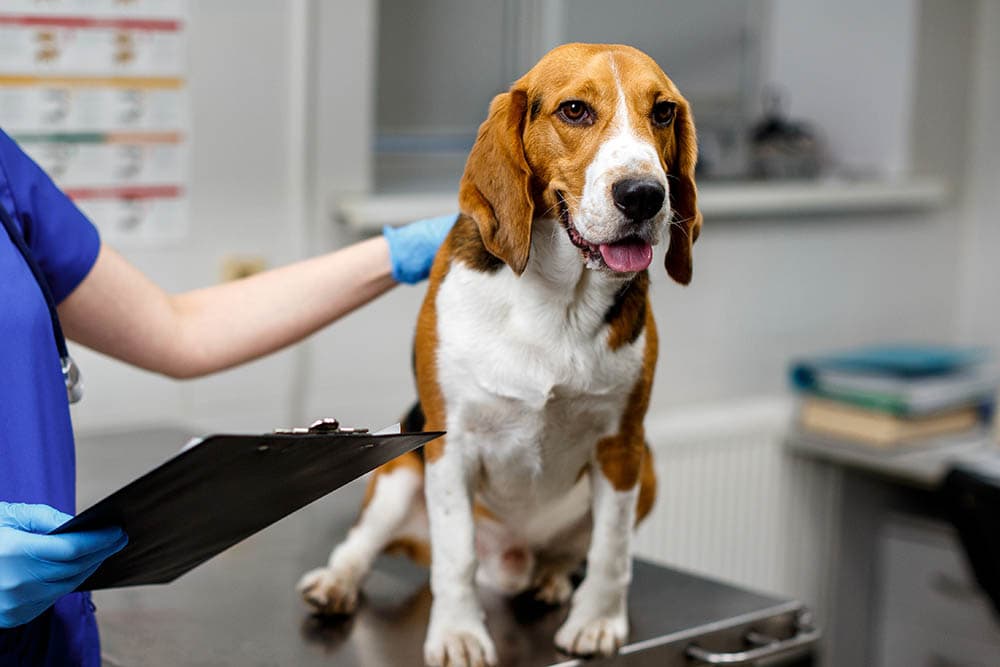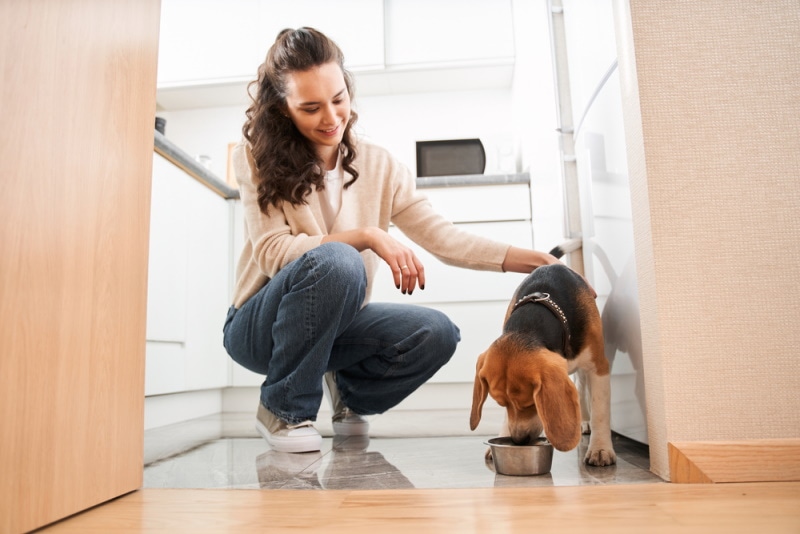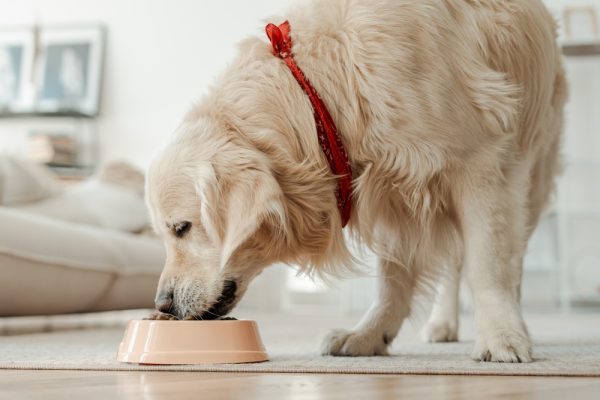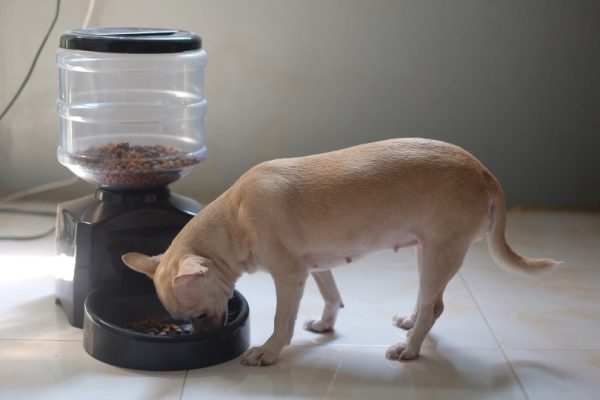Beagles are not hypoallergenic. They shed a lot (though not necessarily as much as a German Shepherd or other high-shedding breeds). Therefore, they do not fit the traditional definition of hypoallergenic.
With that said, there is really no such thing as a hypoallergenic dog. Despite many common misconceptions, all dogs produce allergens pretty equally. For the most part, this is because your dog’s hair isn’t actually the issue. Those with dog allergies aren’t allergic to dog fur at all. Instead, those with dog allergies are sensitive to the proteins the dog creates. These proteins, (called Can F 1 and 2) are found in every dog’s skin, saliva, and urine.
In fact, one study found that allergen levels in homes with “non-hypoallergenic” dogs and “hypoallergenic” dogs were about the same. In other words, dogs that are advertised and sold as hypoallergenic didn’t actually show any difference in the number of allergens they produced.
Therefore, while Beagles are not hypoallergenic (and shed a lot), no other dog is hypoallergenic, either.

Are Beagles Good for Asthmatics?
If you have asthma, you may also have a sensitivity to dog allergens. Having asthma-related sensitivities to dogs and cats is common. In asthma triggered by dog allergies, the person’s immune system is having a reaction to the dog’s proteins, which are largely found in their dander.
On the other hand, being asthmatic does not necessarily mean you are allergic to dogs. Those with asthma may simply be irritated by the dog hair and dander as an increase in the particulate matter in the air. Asthma doesn’t make you allergic to dander, it just makes you less able to stand the irritating effects of breathing in dog fur.
Beagles are known to shed quite heavily. Therefore, they aren’t necessarily as good of a choice for asthmatics as non-shedding dogs. However, if you really want to have a beagle, you’ll likely do fine with one as long as you stay on top of their grooming needs. Regular brushing is important to remove as much fur as possible, and you may want to wash them with a dander-diminishing shampoo. However, you should check with your medical professional before welcoming a dog into your home.
Iit is best if you have another family member handle the grooming. After all, you don’t want to be the one removing the fur and dander, or you may have a reaction. Alternatively, you could take your beagle to the groomer regularly, though professional grooming isn’t required if you handle their grooming at home.

Do Beagles Shed a Lot?
Beagles do shed a significant amount. However, they have short hair, so it doesn’t quite make as much of a mess as other dog breeds. Still, we highly recommend brushing them at least a few times a week to remove as much excess fur as possible. Otherwise, you may find your house quickly covered in dog fur.
These dogs will shed moderately all year-round. You’ll need to brush them every other day at least during the majority of the year. However, like other dogs, they will “blow their coat” twice a year as the seasons change. During these periods, you may want to brush them every day. Sometimes, it helps to take them to a groomer during this period to really remove as much hair as possible. Many owners handle their grooming needs just fine at home, though, which lowers the amount of money you’ll spend on your dog.
There is no magic pill that will make your dog quit shedding. In fact, even with regular brushing, you’ll probably still notice quite a bit of shedding.
Living with a Beagle and Allergies
If you have allergies or asthma, you’ll probably want to take steps to reduce the amount of pet dander in your home. Luckily, there are quite a few ways you can do this. If you take most or all of these steps, you may find that you can live with a beagle just fine despite your underlying condition.
Firstly, you’ll likely want to wash your dog about once a week. Use a shampoo designed for dogs to reduce allergens. There are many quality shampoos that do a lot to reduce dander and allergens. However, you’ll also need to keep an eye on your dog’s skin. Excessive bathing can cause skin irritation and scratching, which can often increase the amount of dander in your home.
Also, brush your beagle regularly. If you can convince someone else to do this for you, that is best as it will decrease your exposure to the dander. However, either way, you should aim to brush your dog daily or every other day at least. Visiting a groomer is sometimes recommended, but it is often not required for beagles.
Choose hardwood floors and remove as many “soft” coverings as possible. Remove curtains, as they tend to hold onto dander and reduce indoor air quality. If you do have to keep soft coverings for one reason or another, invest in a HEPA vacuum and clean them at least weekly.

Use a steam cleaner on carpets and other soft areas regularly. Vacuuming can only do so much, so using a deep cleaner can help remove embedded dander.
Invest in air purifiers and vent filters to catch allergens that do make it into your air. A HEPA filter can go a long way to reducing allergens, so we highly recommend them. They can be expensive, though, so some people only utilize them in the areas of the home that they spend the most time in.
Wash all of your dog’s bedding regularly. Be sure to purchase machine-washable beds to make this process simpler. Most of the dander is going to build up where your dog sleeps and lays, so keep this in mind when cleaning. We recommend not letting your beagle in your room. You spend a lot of time in your room sleeping. By keeping this area an allergen-free zone, you’ll raise your ability to cope throughout the rest of your home when you’re awake.
Think of your allergies like a cup. You don’t begin having symptoms until your cup gets full and starts overflowing. Therefore, by not sleeping in an area with allergens, you prevent your cup from overflowing, even if you interact with your beagle during your waking hours.
Because saliva also holds proteins, we recommend training your beagle not to lick you. This may seem like a small thing, but it can significantly lower your allergen exposure.

Conclusion
Beagles are not hypoallergenic. However, no dog breed is hypoallergenic. According to studies, there is no difference in the allergens produced by different breeds of dogs.
Therefore, beagles aren’t necessarily a worse choice for those with allergies – since they produce the same number of allergens as other dog breeds.
Luckily, there is a lot you can do to reduce your allergic reaction to a beagle, should you decide to adopt one. For instance, many of these steps involve lowering the amount of dander in your home. Typically, this will involve cleaning often, especially softer spaces that hold onto dust. HEPA filters can also be extremely helpful. Discuss your individual needs with your medical professional.
See Also:
Featured Image Credit: Olena Yakobchuk, Shutterstock


















